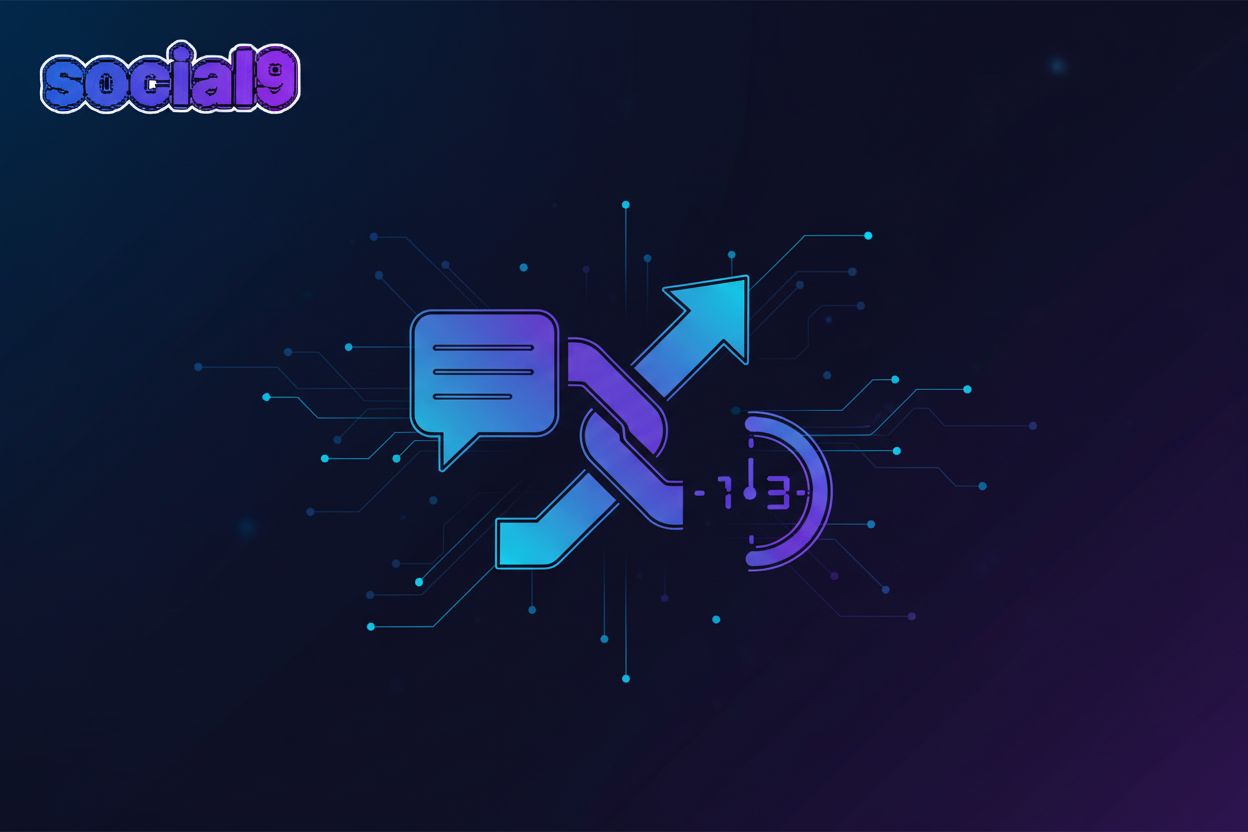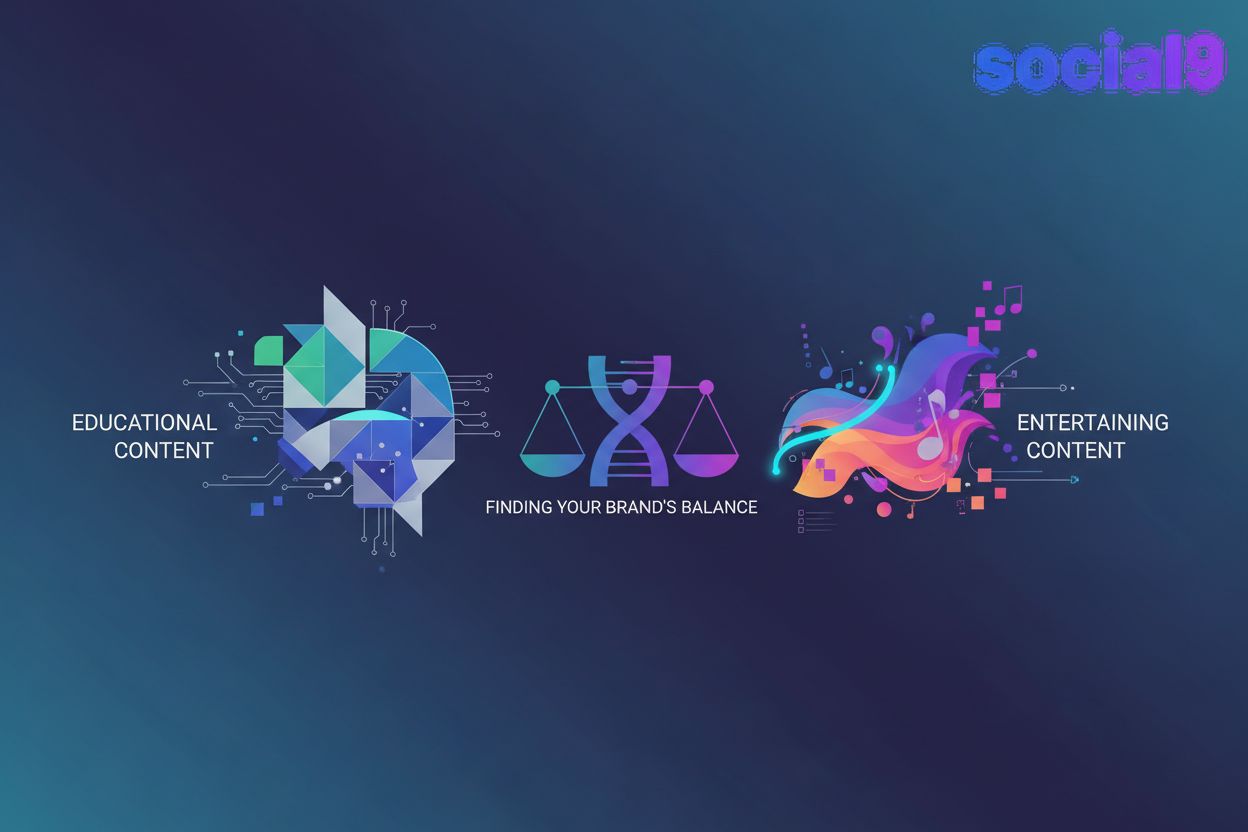Unlocking Efficiency: Automated Content Repurposing Workflows for Social Media Domination
Why Automate Content Repurposing?
Content repurposing isn't just a nice-to-have anymore, it's pretty much a must. In today's crazy fast digital world, content creators are under a ton of pressure to churn out engaging stuff all the time.
The demand for high-quality content across all sorts of social media platforms is just relentless. You gotta have a consistent presence on places like Instagram, Facebook, X, LinkedIn, TikTok, and YouTube, and each one needs its own kind of content.
Content creators often deal with time crunches and not enough resources. Trying to juggle a bunch of platforms and different content formats can get super overwhelming, leading to burnout and, honestly, not-so-great content.
Having smart content strategies is key to making a real impact. A good plan helps creators focus their energy, use their resources wisely, and make sure their brand message stays the same everywhere.
Automation lets content creators make more content with way less effort. When you automate the boring, repetitive stuff, you can actually focus on being creative. Like, ai tools can quickly take a blog post and turn it into a bunch of social media updates.
Automation makes sure your content is consistent across platforms. Automated workflows can keep your content formats, messaging, and branding all in sync, so your audience gets a unified brand experience no matter where they see you.
Automation helps you reach more people and get them to engage. By repurposing content for different platforms, you can find new audiences and get your existing followers more involved. Sharing your best stuff with your email list and announcing upcoming events is a good move.
Automation can cut down on marketing costs and boost your ROI. When you automate content repurposing, you get way more value out of what you already have, so you don't have to create brand new content from scratch all the time.
Repurposing what you already have maximizes the value of your content assets. Instead of letting good content just sit there, repurposing gives it new life, making it reach further and have more impact.
Content repurposing is a smart way to reach different kinds of audiences on different platforms. Different people like different content formats. By turning your content into various formats, you can cater to what different audiences prefer.
Content repurposing can really help with SEO and brand visibility. Turning your content into different forms can improve your search engine rankings and make your brand more visible.
By automating content repurposing workflows, content creators can deal with the content overload and get more efficient, consistent, and better returns. Next up, we'll look at how to build effective automated workflows for social media domination.
Building Your Automated Workflow: A Step-by-Step Guide
Ready to totally change up your content strategy? Let's get into building an automated content repurposing workflow, step by step.
First, you gotta do a deep dive content audit to find your best-performing and evergreen pieces. This means figuring out what content keeps bringing in traffic and engagement over time.
- Start by looking at content metrics. Check out engagement rates (likes, comments, shares), where your traffic is coming from, and conversion rates. Tools like Google Analytics can help you see which pages are getting the most traffic.
- Focus on evergreen content that stays relevant. For example, a financial company might repurpose articles about "basic investment strategies" or "understanding credit scores," because those topics always grab audience interest.
- Make sure your content choices match your repurposing goals. Are you trying to get more brand awareness, generate leads, or boost SEO? Pick content that helps you do that.
Next, set clear, measurable goals for your repurposing efforts. This makes sure your work is focused and lines up with your overall marketing plan.
- Set SMART goals (Specific, Measurable, Achievable, Relevant, Time-bound). For instance, a healthcare provider might want to increase website traffic by 20% next quarter using repurposed content.
- Pick the right content formats for each platform. Video usually does well on TikTok and YouTube, while LinkedIn is great for articles and professional insights.
- Understand what audiences like on different channels. What kind of content really connects with your followers on each platform? Adjust your format accordingly.
Seeing your content repurposing process laid out can help you stay organized and spot any slowdowns. A workflow chart gives you a clear overview of each step, making sure everything runs smoothly and efficiently.
- Figure out the key steps in your repurposing process: picking content, changing the format, scheduling, and promoting.
- Determine what tasks depend on each other. For example, editing video might need the script to be done first.
- Create a flexible workflow chart that you can change up. This lets you tweak your strategy based on how things are going and what your audience is into.

Once you have a clear workflow, you're ready to adapt your content for different platforms.
AI-Powered Tools for Content Repurposing
Ai isn't just some sci-fi thing anymore; it's totally changing how content creators repurpose their work, saving time and making their message go further. Ready to see how ai can shake up your content strategy?
Ai-powered tools are revolutionizing content repurposing by automating tasks that used to take forever and a lot of manual effort. Here's how:
- Using ai to automatically summarize long-form content: Ai algorithms can take long articles or reports and condense them into short summaries, perfect for social media updates or email newsletters. For example, a detailed whitepaper can be automatically summarized into a bunch of engaging tweets, saving hours of manual work.
- Generating social media captions and ad copy with ai: Ai can create catchy captions and ad copy that are tailored for different platforms. One blog post can be used to generate multiple versions of ad copy, each optimized for platforms like Facebook, Instagram, and LinkedIn.
- Converting text to video and vice versa: Ai can turn written content into engaging videos, reaching a wider audience. A blog post can become a short animated video for TikTok or YouTube, grabbing the attention of people who like visuals.
There are a bunch of ai tools out there to make content creation easier:
- Overview of ai tools for text generation (e.g., ChatGPT): Ai models can help create new text variations from existing content. For instance, ChatGPT can rephrase a blog post into a script for a video, giving you a starting point for video content.
- Ai-powered video creation platforms (e.g., Lumen5): These platforms automatically turn text into videos, adding visuals and animations. Lumen5, for example, can turn a blog post into a shareable video in minutes, boosting engagement.
- Image and graphic design tools with ai assistance (e.g., Canva): Ai-enhanced design tools can create good-looking graphics and images. Canva has features like "Magic Resize," which automatically adjusts designs for different social media platforms.
Ai can help optimize how you distribute your repurposed content:
- Using ai to optimize posting times: Ai algorithms look at audience behavior to figure out the best times to post content. By finding peak engagement times, ai makes sure your content reaches as many people as possible.
- Automated content scheduling across multiple platforms: Ai-powered tools automate scheduling content across various social media channels. Content can be scheduled ahead of time and posted automatically at the best times on different platforms.
- Ai-driven hashtag research and optimization: Ai can find trending and relevant hashtags to make your content more visible. Using ai-driven hashtag tools, content creators can make sure their posts reach a bigger audience and get more engagement.
Ai's role in content repurposing is about more than just automation; it's about getting the most out of your time and creativity. Next, we'll look at how to measure the impact of your content repurposing efforts.
Content Formats and Channels: A Repurposing Matrix
Having trouble keeping up with the content needs of all your social media platforms? A well-thought-out content repurposing matrix can be the answer, turning one piece of content into a bunch of engaging posts.
Here's how to repurpose content and totally own social media:
Turning blog posts into Twitter threads: Condense the main points from a blog post into a series of short tweets. For example, a marketing blog post about "SEO strategies" can be broken down into 10-15 tweets, each sharing a specific tip or tactic.
Creating LinkedIn articles from blog sections: Expand on specific parts of a blog post to make standalone LinkedIn articles. For instance, a blog post on "digital marketing trends" could have a section on "the rise of video marketing" turned into a detailed LinkedIn article.
Designing engaging visuals for Instagram and Pinterest: Turn key data or quotes from a blog post into good-looking graphics for Instagram and Pinterest. A finance blog post could create an infographic summarizing important investment strategies.
Slicing long-form videos into TikTok shorts and Instagram Reels: Take interesting bits or tutorials from longer videos to create short, attention-grabbing content for TikTok and Instagram Reels. For example, a YouTube tutorial on cooking can be cut into 15-60 second Reels showing individual steps.
Extracting audio for podcast episodes: Turn the audio from a video into a podcast episode, giving your audience another way to consume your content. A webinar recording can become an informative podcast episode.
Creating quote graphics from video transcripts: Pull out impactful quotes from video transcripts and design good-looking graphics to share on social media. A motivational speaker's YouTube video can generate tons of quote graphics.
Transcribing podcast episodes into blog posts: Turn what was said in a podcast episode into a written blog post, reaching a new audience who prefer reading. A podcast interview with a tech entrepreneur can become an insightful blog post.
Creating audiograms for social media promotion: Make short, animated audio clips (audiograms) with key moments from your podcast to promote episodes on social media. An audiogram of a particularly insightful quote from a podcast can grab attention on platforms like X.
Turning podcast interviews into quote collections: Compile impactful quotes from podcast interviews into themed collections to share on social media or in newsletters. A series of podcast interviews with business leaders can be distilled into a "leadership quotes" collection.
By strategically repurposing content across these formats and channels, you can really boost your reach and engagement.
Next, we'll look at how to make your content shine on each platform.
Measuring and Optimizing Your Repurposing Workflow
Does your content repurposing strategy feel like you're just guessing? Measuring and optimizing your workflow is super important to make sure your efforts are actually paying off and getting you the results you want.
To really get what your content repurposing is doing, you need to track the right Key Performance Indicators (KPIs). Without these numbers, you're basically flying blind.
- Tracking engagement metrics (likes, shares, comments): Watching how people interact with your repurposed content is key. High engagement means your content is connecting with the audience. For example, a retail company might track how many likes and shares their Instagram Reels get after turning a blog post into short video clips.
- Monitoring website traffic and conversions: Repurposed content should send people back to your website and help with conversions. A financial services company, for example, would want to see more website visits and leads from LinkedIn articles repurposed from their whitepapers.
- Analyzing social media reach and impressions: Knowing how many people see your repurposed content helps you gauge its visibility. A healthcare provider could track the reach and impressions of their Facebook posts to see if repurposing content from their webinars is expanding their audience.
Don't just "set it and forget it." A/B testing is your secret weapon for constantly improving your repurposing strategy.
- Experimenting with different content formats and messaging: Try out different formats and ways of saying things to see what your audience likes best. A SaaS company could A/B test different headlines and visuals for their repurposed blog posts on LinkedIn to find the most effective combo.
- Testing optimal posting times and frequencies: Find the sweet spot for when and how often to post repurposed content. A food blogger might test different posting times on Instagram to figure out when their audience is most active and ready for their recipe content.
- Refining your workflow based on performance data: Use what you learn from your A/B tests to make decisions based on data and make your workflow better. An e-commerce business could tweak its email marketing strategy based on the click-through rates of different repurposed content formats.
Even the best workflows can always be improved. Regularly review your process to find and get rid of any bottlenecks.
- Identifying bottlenecks and inefficiencies: Pinpoint areas in your workflow that are slowing you down or causing mistakes. A marketing agency might find that video editing is a bottleneck in their content repurposing process, making them look for ways to speed that up.
- Implementing automation tools to streamline processes: Use technology to automate repetitive tasks and free up your team's time. A non-profit organization could use ai-powered tools to automatically create social media captions from their blog posts, saving valuable time and resources.
- Continuously improving your repurposing strategy: Stay flexible and open to new ideas. A tech company might adjust its content repurposing strategy based on new social media trends and algorithm changes.
By constantly measuring, testing, and refining your content repurposing workflow, you can get the most out of it and be way more efficient.
Now that you know how to measure your success, let's look at how to tailor your content for each specific social media platform.
Real-World Examples of Successful Automated Content Repurposing
Content repurposing can seem a bit vague without seeing it in action. Let's check out how different organizations are using automated workflows to make their content reach further and have more impact.
B2B SaaS Lead Generation: One SaaS company got more leads by turning webinars into blog posts and social media snippets. By automating the extraction of key ideas and quotes, they created a steady stream of engaging content.
E-commerce Brand: An e-commerce brand used ai to create catchy product descriptions and social media ads straight from customer reviews. This not only saved time but also made sure the marketing copy actually connected with potential buyers by reflecting what real customers were saying.
Influencer Efficiency: Influencers are also using content repurposing to avoid content fatigue. They automate the process of slicing longer YouTube videos into shorter TikTok and Instagram Reels. This saves time and gets them in front of different audiences.
These examples show how automated content repurposing can lead to big results across all sorts of industries.
Next, we'll move on to platform-specific strategies, making sure your content shines on every channel.
Supercharge Your Social Media with Social9's AI-Powered Tools
Ready to really boost your social media game?
- Social9 offers ai-powered generation for easy content creation.
- Craft smart captions that connect with your audience.
- Make your content easier to find with intelligent hashtag suggestions.
- Use customizable templates that keep your brand looking consistent.
- Get 24/7 support to make the most of your content strategy.
Ready to use Social9 to automate workflows?





